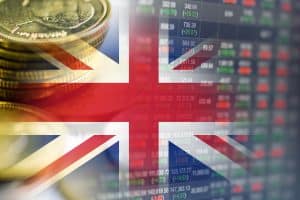Everything about The UK inflation rate trends 2025

Anúncios

The UK inflation rate trends in 2025 are expected to have a significant impact on various sectors of the economy.
Anúncios
As prices fluctuate, households, businesses, and investors alike will need to stay informed about how these changes affect daily life and financial planning.
Whether you’re looking at the cost of living, interest rates, or economic policies, understanding the UK inflation rate trends is crucial for making sound financial decisions.
Anúncios
Understanding inflation rates in the UK
Understanding UK inflation rate trends is essential for navigating the country’s economic landscape.
Inflation is not just a set of numbers, it impacts almost every aspect of your life, from the cost of everyday essentials like food and fuel to the value of your home.
UK inflation rate trends influence everything from household budgets to investment decisions, making it crucial for both consumers and businesses to stay informed about these shifts.
Inflation is the rate at which the prices of goods and services increase over time. In the UK, UK inflation rate trends directly affect consumers’ purchasing power.
When inflation is low, money tends to stretch further, meaning you can buy more with the same amount. However, when inflation rises, you may find that your expenses outpace your income, which can strain budgets and create financial challenges.
Causes of Inflation
There are several factors that contribute to UK inflation rate trends, and each one plays a unique role in driving up prices. Understanding these causes helps explain why inflation rises and falls. Key causes include:
Demand-pull Inflation
This occurs when demand for goods and services exceeds their supply. During periods of economic growth, more people are employed and have more disposable income, which leads to higher demand. When demand outstrips supply, prices naturally rise.
This is a common scenario in a growing economy, and it can have a significant effect on UK inflation rate trends.
Cost-push Inflation
Cost-push inflation happens when the costs of production—such as raw materials, wages, or energy increase. Businesses, in turn, pass on these higher costs to consumers through higher prices.
If the cost of essential goods like oil or metals rises, production costs increase, and consumers bear the brunt of these price hikes, contributing to the overall UK inflation rate trends.
Imported Inflation
This form of inflation occurs when the price of imported goods rises, often due to fluctuations in currency exchange rates.
Since the UK imports a significant portion of its goods, a weak pound can make these imports more expensive, causing prices to rise domestically.
Import costs for everything from food to electronics can affect inflation trends in the UK and directly influence UK inflation rate trends.
The Importance of Monitoring Inflation
Keeping track of UK inflation rate trends is vital for both consumers and policymakers. For individuals, understanding inflation rates helps in making key financial decisions, such as adjusting spending, saving, and investing.
When inflation is high, you might need to tighten your budget or change your investment strategy to protect your wealth. Monitoring UK inflation rate trends also helps you anticipate price increases and plan accordingly.
For policymakers, inflation control is a central task. The Bank of England uses interest rates as a tool to keep UK inflation rate trends in check.
If inflation rises too quickly, central banks may raise interest rates to discourage borrowing and slow down consumer spending, which can stabilize the economy.
How Inflation Affects Your Daily Life
As you consider the effects of UK inflation rate trends on your financial situation, think about how they influence your everyday life. Here are a few key ways inflation can impact you:
- Rising Food and Fuel Prices: As UK inflation rate trends increase, essential items like groceries and fuel become more expensive, which can strain your monthly budget. This is especially impactful for low-to-middle-income households that spend a significant portion of their income on these essentials.
- Stagnant Wages: In some cases, wages may not keep pace with UK inflation rate trends. Even if your paycheck increases, it may not be enough to cover the rising cost of living. This imbalance can lead to a reduction in your standard of living and cause financial stress.
- Investment Adjustments: UK inflation rate trends impact various investment vehicles, including stocks, bonds, and real estate. As inflation increases, it may erode the value of cash or fixed-income assets, prompting investors to adjust their portfolios to protect against inflationary pressures.
In summary, understanding UK inflation rate trends is more than just keeping track of percentages. It’s about recognizing how changes in inflation affect your purchasing power, financial planning, and long-term goals.
With this knowledge, you can make smarter decisions about spending, saving, and investing, allowing you to better navigate the challenges of an inflationary environment.
Key factors influencing UK inflation in 2025
Several key factors influencing UK inflation in 2025 play a crucial role in shaping the economic landscape.
Understanding these factors is vital for navigating the changing environment and making informed decisions about spending, saving, and investing.
Each factor has a significant impact on inflation and its subsequent effects on consumers, businesses, and the economy as a whole.
One of the most significant factors affecting UK inflation rate trends is monetary policy. The Bank of England uses interest rate adjustments to control inflation.
Lower interest rates can encourage borrowing and spending, which may increase demand for goods and services, potentially leading to higher prices.
On the other hand, higher interest rates can reduce borrowing and consumer spending, thus slowing down inflationary pressures.
Global Economic Conditions and Their Impact on UK Inflation
Global economic conditions are an important driver of UK inflation rate trends. The economic performance of major markets like the US and China can influence the UK’s export and import levels.
These global dynamics directly affect domestic prices and inflation rates. Several global factors can significantly affect inflation:
- Increased Demand for UK Exports: A surge in demand for UK products abroad can push up prices for goods and services in the domestic market, as producers may prioritize international sales.
- Decline in Imports: If there’s a decrease in imports due to global supply chain disruptions or rising costs abroad, the UK may face supply shortages, driving up the prices of imported goods and domestic alternatives.
- Changes in Trade Agreements and Tariffs: Trade agreements and tariffs are crucial in shaping UK inflation rate trends. Adjustments to trade policies can directly impact the cost of goods coming into the UK. Higher tariffs can raise import costs, leading to inflationary pressures.
Understanding how global economic conditions influence the UK inflation rate trends provides a broader perspective on the factors at play and their effects on domestic prices.
The Cost of Raw Materials and Production Costs
The cost of raw materials is another key factor that influences UK inflation rate trends.
As production costs rise due to increases in the prices of essential goods like oil, metals, or energy, companies may pass those costs on to consumers in the form of higher prices.
This cost-push inflation can make everyday goods more expensive, contributing directly to inflation.
When global raw material prices rise, businesses face increased input costs, and these costs are often reflected in higher prices for consumers.
This, in turn, can increase the UK inflation rate trends, especially in sectors that rely heavily on raw materials, such as construction and manufacturing.
Consumer Behavior and Its Role in Inflation
Consumer behavior has a profound impact on UK inflation rate trends. When consumers feel financially secure and confident about their future, they tend to spend more.
This increased consumer demand can drive prices up, resulting in demand-pull inflation. On the other hand, if consumer confidence falters and spending decreases, inflationary pressures can ease.
- Increased Consumer Spending: A surge in spending leads to higher demand for goods and services, which can push prices upward, especially when supply is not keeping pace with demand.
- Tighter Consumer Spending: When consumers cut back on discretionary spending due to financial concerns or economic uncertainty, it can reduce overall demand, potentially slowing down inflation.
Understanding how consumer confidence influences UK inflation rate trends helps predict how inflation might evolve in response to changes in spending behavior.
Wage Growth and Employment’s Impact on Inflation
Finally, wage growth and employment levels are vital contributors to UK inflation rate trends.
When wages increase, consumers have more disposable income, which can lead to increased spending and higher demand for goods and services, driving prices up (demand-pull inflation).
However, if wage growth does not keep pace with inflation, consumers’ purchasing power may shrink, leading to reduced demand.
Conversely, a decline in employment or stagnant wages can dampen consumer spending, which may reduce inflationary pressures.
In times of high unemployment or low wage growth, inflation may slow as demand for goods and services decreases.
By monitoring wage growth and employment rates, policymakers can gauge the future trajectory of inflation and adjust monetary policy accordingly.
In summary, the key factors influencing UK inflation in 2025 are complex and multifaceted, ranging from monetary policy adjustments to global economic conditions and consumer behavior.
Understanding these factors allows businesses, consumers, and policymakers to anticipate inflation trends and make informed decisions.
By staying informed about UK inflation rate trends, you can better prepare for potential economic shifts and protect your financial well-being.
Impact of inflation on UK households

The impact of inflation on UK households is significant and multifaceted. As prices rise, families face greater challenges in managing their budgets and meeting daily needs.
Understanding this impact is crucial for planning financial strategies.
When inflation increases, the cost of basic necessities such as food, fuel, and housing also tends to rise. This can lead to a tighter household budget, forcing families to make difficult choices about spending.
Rising Costs of Living
One of the most immediate and visible effects of inflation is the rising cost of living. As prices climb, families may find it increasingly difficult to afford everyday items and services.
Key areas impacted by rising inflation include:
Food Costs
The price of basic groceries, such as bread, milk, and other staple foods, often rises with inflation.
As food prices increase, families may have to spend a larger portion of their income on these essentials, which can be particularly burdensome for lower-income households.
UK inflation rate trends make it clear that food costs will likely continue to increase, which can strain household budgets.
Utilities
Inflation can also cause the prices of essential utilities, like electricity, water, and gas, to rise. These costs are often unavoidable and can place a significant strain on monthly budgets.
For many households, rising utility costs become a major financial burden, forcing them to make sacrifices in other areas of their lives.
Transportation Costs
Another area heavily impacted by inflation is transportation. As fuel prices increase, so do costs associated with commuting and travel.
Higher fuel prices can make daily commuting more expensive, and families who rely on cars for work or school may face significant challenges in maintaining affordable transportation.
The cumulative effect of these price increases leads to a reduction in disposable income, making it more difficult for families to save, invest, or plan for the future.
The impact of inflation on UK households is thus not only felt in the day-to-day struggles of covering essential costs but also in the longer-term financial planning challenges it creates.
Wage Stagnation vs. Inflation
While inflation rises, wage growth often does not keep pace. Many households experience wage stagnation, where earnings do not increase significantly.
This disparity means that even as costs rise, families may not see corresponding increases in their income. For example, if wages increase by 2% while inflation soars by 5%, families effectively have less purchasing power than before.
This economic imbalance can lead to financial stress and may push households to rely more heavily on savings or credit. Increased credit usage can accumulate debt, exacerbating financial woes.
Adjustments in Spending Habits
Inflation also affects spending habits. Families may rethink their priorities as budgets tighten. Instead of spending on luxury items, many turn to:
- Discount stores to find savings on essentials.
- Budget planning to track expenses closely.
- Cook-at-home meals instead of dining out.
Such adjustments highlight the direct influence of inflation on lifestyle choices and overall well-being.
The impact of inflation on UK households cannot be understated. It challenges families to adapt financially and seek ways to maintain their living standards in an ever-changing economic landscape.
Government measures to combat inflation
Government measures to combat inflation are crucial for maintaining economic stability and protecting consumers.
These strategies can help control rising prices and support households affected by increasing costs. Understanding these measures gives insight into how policies aim to stabilize the economy.
One common approach is adjusting interest rates. The Bank of England may increase rates to make borrowing more expensive. This strategy aims to reduce spending and cool off an overheating economy.
By charging higher interest, the government can temper inflationary pressures.
Fiscal Policy Adjustments
Another vital measure involves fiscal policy. The government can alter its spending and tax levels to influence the economy. For instance, increasing taxes can reduce disposable income, leading to decreased consumer spending.
This can help curb inflation rates.
- Tax incentives: Offering tax relief can stimulate spending in specific sectors.
- Government spending: Adjusting spending on public services can directly affect economic activity.
- Investment in infrastructure: Government projects can create jobs and stimulate growth.
Such adjustments can effectively manage inflation by balancing supply and demand in the economy.
Supply-Side Policies
Supply-side policies also play a role in combating inflation. These policies aim to increase productivity and efficiency within the economy. By improving these factors, the government can help lower production costs and, ultimately, consumer prices.
Key focus areas may include:
- Investing in education and training to boost workforce skills.
- Encouraging innovation and technology to enhance productivity.
- Reducing regulations that may hinder business growth.
Such measures can support a more stable market and contribute to lower inflation in the long term.
Ultimately, the government has various tools at its disposal to combat inflation effectively. Keeping a watchful eye on these measures helps consumers understand their implications for everyday life.
Comparison with previous years
Comparing inflation rates with previous years provides valuable insights into economic trends. Understanding how inflation has changed helps households and businesses prepare for the future.
By examining these trends, we can learn how global events and government policies have influenced UK inflation.
Historically, inflation rates have varied significantly. In recent years, there have been notable periods of both low and high inflation.
For instance, in the years following the 2008 financial crisis, inflation remained relatively low, typically around 1-2%. This stability allowed households to plan their budgets with minimal surprises.
Rising Inflation Trends
However, starting in 2021, inflation began to rise sharply. Factors such as supply chain disruptions and increased demand as economies opened up contributed to this trend.
In 2022, the rate reached levels unseen in over a decade, prompting urgency among policymakers.
- Annual inflation rates in 2021 averaged around 2.5%.
- By mid-2022, inflation had surged to approximately 9%.
- These rapid increases coincided with global events, including conflicts and rising energy prices.
This comparison highlights how external factors can drastically affect the economy. The increase in inflation dramatically impacted household budgets, leading to changes in spending behavior.
Long-Term Inflation Rates
Looking further back, inflation rates over the past twenty years have been characterized by fluctuations influenced by various crises. For example:
- The inflation rate was relatively steady during the late 1990s and early 2000s.
- Inflation rose sharply during the 1970s, reaching double digits due to oil crises.
- After stabilizing in the late 1980s and 1990s, rates fell again.
This historical perspective shows how inflation cycles can inform future expectations. Understanding these cycles helps economists and consumers manage their expectations in the face of uncertainty.
Overall, the comparison with previous years sheds light on the economic landscape and highlights the importance of monitoring inflation trends over time. It provides context for the current situation and helps predict future movements.
Predictions for UK inflation by the end of 2025

redictions for UK inflation by the end of 2025 are critical for both individuals and businesses in shaping their financial decisions.
Understanding where inflation might be headed is crucial for adapting strategies and planning for future financial challenges.
Economists analyze multiple factors to forecast the trends that will shape the UK inflation rate trends in 2025, offering insights into how these changes will impact the cost of living, savings, and investment strategies.
Several key indicators influencing UK inflation predictions can provide valuable insight into the economic landscape. One of the most significant drivers is economic growth.
When the UK economy expands, there is typically an increase in the demand for goods and services, leading to higher prices.
Therefore, if growth continues at a strong pace, UK inflation rate trends may remain elevated in 2025, further influencing consumer spending and investment patterns.
Interest Rates and Monetary Policy
A significant aspect of UK inflation predictions revolves around the response of the Bank of England. The Bank plays a central role in controlling inflation by adjusting interest rates.
If inflation rates stay high, the Bank may raise interest rates to reduce consumer spending and borrowing, which can help bring prices down. Conversely, if inflation is under control, lower interest rates may be used to stimulate growth.
- Higher Interest Rates: Raising interest rates can help curb demand by making borrowing more expensive, thus reducing consumer spending and slowing down inflation.
- Lower Interest Rates: Lowering rates could encourage spending and borrowing, helping to boost economic activity if inflation is under control.
Economists predict that interest rates will play a key role in the UK inflation rate trends as they balance economic stability with the need to control inflation.
Predictions for 2025 often estimate inflation will hover around 2-3% in a stable economic environment. However, rapid increases in prices could occur if geopolitical tensions or energy prices surge unexpectedly.
Consumer Behavior and Market Reactions
Consumer behavior also plays a role in inflation forecasts. If households feel confident about their financial situations, they may spend more.
This increased spending can contribute to rising prices. Conversely, if confidence dips, it could slow down inflation. Many experts keep a close eye on consumer sentiment indicators to gauge potential spending trends.
Moreover, external pressures like international trade conditions can shift inflation predictions. For example, supply chain improvements could help lower costs, while disruptions might have the opposite effect.
Overall, the predictions for UK inflation by the end of 2025 suggest a cautious optimism. While some factors could drive inflation higher, other signs indicate it may stabilize, allowing households and businesses to adapt.
In summary, understanding the trends and predictions for UK inflation is essential for preparing for the future.
While the rates might fluctuate due to various factors such as economic growth, monetary policies, and consumer behavior, staying informed enables households and businesses to make better financial decisions.
Keeping an eye on government measures and historical comparisons provides context for the current economic situation. Ultimately, understanding these dynamics helps you navigate the complexities of inflation effectively.
Navigating the Future of UK Inflation Rate Trends
The UK inflation rate trends in 2025 will have a profound impact on the UK economy and individual financial decisions.
As inflation continues to influence everything from household budgets to investment strategies, understanding its dynamics is essential for preparing for what lies ahead.
With inflation likely stabilizing at around 2-3%, several factors will determine how these trends evolve, including monetary policy adjustments, shifts in consumer behavior, and external pressures from global markets.
For consumers, the UK inflation rate trends directly affect purchasing power. As prices rise for everyday essentials like food, fuel, and housing, individuals must adapt their spending habits to avoid financial strain.
If wages don’t keep up with inflation, families will face tough choices, potentially leading to budget cuts or a heavier reliance on savings and credit.
This makes it more important than ever to understand how inflation can impact your finances and prepare accordingly.
On the other hand, for businesses and investors, the UK inflation rate trends provide valuable insights into potential market movements.
Companies may need to adjust their pricing strategies, while investors must consider how inflation affects the returns on stocks, bonds, and other assets.
As inflation plays a significant role in interest rates set by the Bank of England, maintaining a keen eye on monetary policies will be essential for making informed investment decisions.
Furthermore, it’s important to recognize that UK inflation rate trends don’t exist in isolation. They are influenced by global economic conditions, supply chain challenges, and shifts in consumer confidence.
Government measures aimed at controlling inflation, such as tax adjustments or interest rate changes, can either ease or exacerbate inflationary pressures, and understanding these will help you better navigate the uncertain economic landscape.
Ultimately, staying informed about UK inflation rate trends allows you to make smarter financial choices, whether you’re a consumer, business owner, or investor.
With a balanced understanding of inflation’s impact, you can position yourself for long-term success in a constantly evolving economic environment.
For further insights on UK inflation rate trends and to stay updated with real-time data, visit these resources: Bloomberg article and TradingEconomics.
FAQ – Frequently Asked Questions about UK Inflation Trends
What factors influence UK inflation rates?
Inflation rates in the UK are influenced by economic growth, supply chain conditions, government policies, and consumer behavior.
How does the government combat inflation?
The government combats inflation by adjusting interest rates, modifying fiscal policies, and implementing supply-side strategies to stabilize prices.
What are the predictions for UK inflation by the end of 2025?
Predictions suggest that UK inflation may stabilize around 2-3% by the end of 2025, influenced by economic recovery and improved supply conditions.
How does consumer behavior affect inflation?
Consumer behavior directly impacts inflation as increased spending can drive prices up, while reduced spending can help keep inflation in check.
Liked the article?





